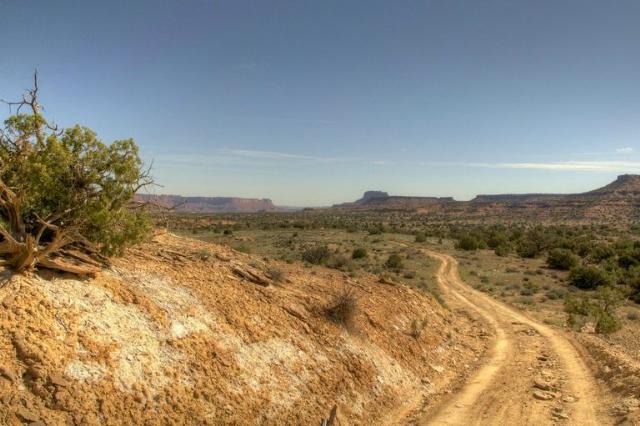
Read The Terrain
It’s not smart to be surprised by a severe or potentially dangerous section of trail. So know what you’re getting into before you get there. If you encounter a particularly rough stretch, you might want to climb out of the cab and scout ahead on foot to get an idea of how to tackle the next section. That quick look might provide some valuable information—as will watching another vehicle drive through the same spot.
But let’s be honest, four-wheeling is about driving. So instead of scouting the whole trail, you’ll want to learn to read the terrain. Just like professional off-road racers do, elevate your gaze so you can look far enough ahead to notice how the trail changes. With some practice, you’ll be able to anticipate what lies ahead.
For example, if you notice a point on the trail’s horizon where the trail disappears or pitches to one side, it could mean a steep downhill is coming up. Similarly, when you attempt a steep climb, you should map out the line you plan to take—which rocks you’ll put your tires on and which ones you’ll need to steer around to make a clean pass.
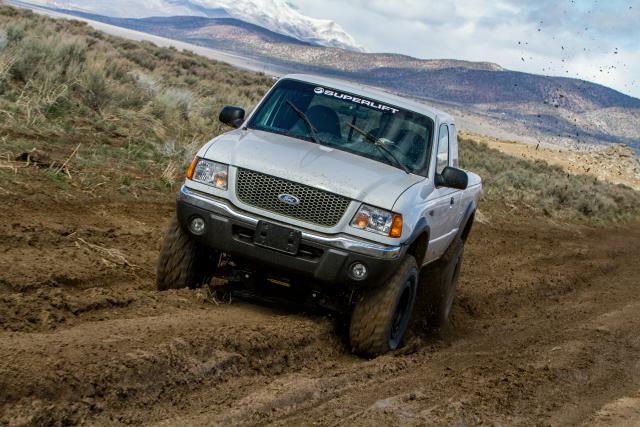
Pick The Right Gear
As soon as the tires touch dirt, shift into 4WD—or, in all-wheel-drive vehicles, lock the center differential. Why so soon? Because you could forget to do it later (seriously, we’ve done that). More importantly, once the rear tires begin to spin, you might already be stuck. And shifting into 4WD at that point won’t always free the vehicle.
Most tough trails will require the added control of 4WD Low Range. This low-range gearset (which typically varies from 2.0:1 to 3.0:1, depending on the vehicle) puts the engine’s power through another set of gears before it reaches the wheels. This gear multiplication will help you drive slower with increased torque at the wheels. That way you’ll be able to ease up and over that boulder with more control.
Selecting the right transmission gear is important too. Generally you’ll want to drive as slowly as possible and as fast as necessary on a trail. In a manual transmission 4X4, that usually means you’ll want to use first gear when crawling over rocks. However, soft or sandy soil requires a bit more momentum and wheel speed to keep the tires floating on top, so a higher gear makes sense. Muddy trails are a wild card. If the mud is deep and sticky enough you won’t have traction when driving slowly. A higher gear will allow more wheel speed and the centrifugal force will clear the tires and provide fresh biting edges.
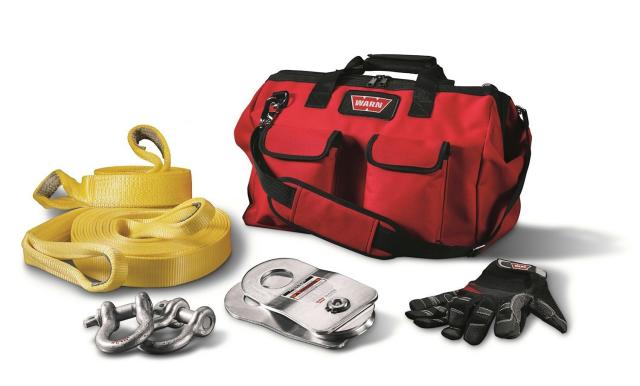
Bring Recover Gear
Even with precise and thoughtful moves behind the wheel, every four-wheeler will get stuck eventually. In a pinch, slipping a rugged floor mat under each tire, or simply stacking rocks or filling in holes, could help get you free. But for a serious stuck (and most of them are), you’ll need the right recovery gear to ensure you’ll make it back before nightfall.
If you could carry only one piece of recovery equipment, it would be a heavy-duty 2-inch-wide tow strap with fabric loops (not hooks) on each end. These straps can be secured using a strong clevis at each end to attach directly to the vehicle’s frame or a frame-mounted tow hook. Never wrap the strap around a suspension arm, axle, or bumper as an attachment point.
Of course, if you travel alone and there’s no one to pull you, that strap won’t help. So investing in an electric winch rated for your vehicle (about 1.5 times the GVWR) would make sense. A typical Ford Ranger would use a winch rated at 8000 to 9000 pounds. One great way to get just about everything you’d need for extraction (whether you have a winch or not) is with a Warn recovery kit.
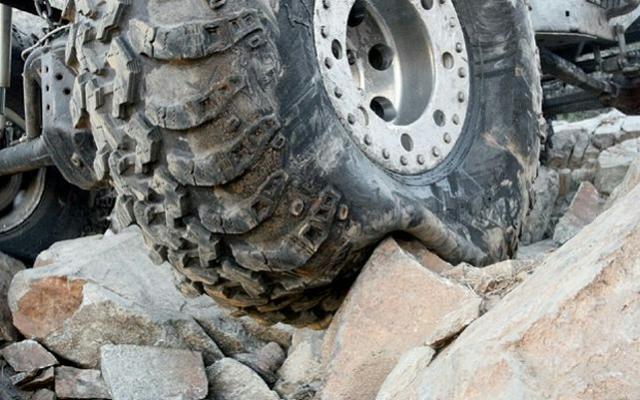
Lower Your Tire Pressure
Lower tire pressures equal increased traction in just about every off-road situation. Dropping the pressure in your tires will allow the tire sidewall and tread to flex and mold itself around a rock or other trail obstacle. As the tire envelops big rocks under it’s tread, the vehicle has more grip, and, as a bonus, the ride quality is much better. Sand-dune running or deep-snow runs also require lower pressures, but in these cases the expanded tire footprint allows the tires to ride on top of the sand or snow instead of digging down and getting stuck.
Typical rock-crawling vehicles will run air pressures at 8 psi or even lower. But a word of warning: The lower the air pressure, the more likely the tire bead will pop off the rim and you’ll have a flat tire. And the lower the pressure, the less ground clearance you’ll have, so use caution decreasing the tire pressure.
Higher air pressures have their place too. Increased pressures will make the tires stiffer and less prone to punctures, sidewall damage, or heat-related failures at higher speeds. So if you plan on running through the rocky desert at speed, you’ll need to air up much closer to street pressure. A fuel station with compressed air isn’t always near the trailhead, so it’s smart to pack an onboard air compressor and accurate gauge.
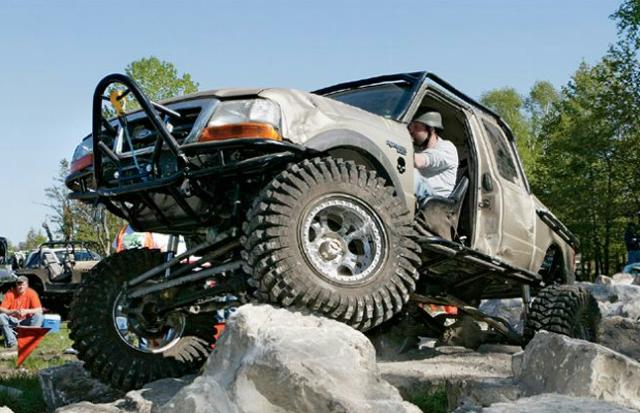
Find Traction
Even with lower tire pressures providing increased grip, it’s easy to have tires slip on sandy surfaces or dig down into holes, leaving your rig stuck. When tires start to spin or slide, drivers often (almost instinctively) feed in more throttle. But squeezing more throttle usually makes those tires loose grip even quicker. The best solution? Back off the gas and gently saw your steering wheel back and forth to find traction. Turning the wheels back and forth allows all those biting edges engineered into your tires to do their job, digging into fresh patches of dirt or gripping that clean side of the rock to pull your 4X4 through. This technique takes practice, and you might need to back out of a difficult section several times and try new routes. But mastering this move will prove invaluable. Make certain that you keep your thumbs on the outside of the steering wheel rim, though. Because as the tires contact trail obstacles, the steering wheel could kick suddenly, spraining or even breaking a finger.
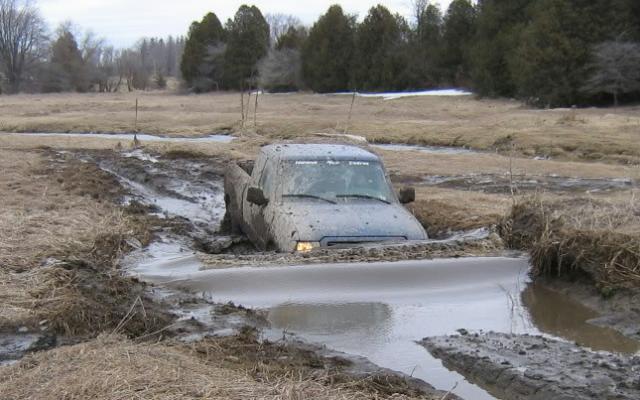
Check The Depth
Four-wheeling is unpredictable—the day’s trail ride might include crossing a stream. So make sure to check the fording depth of your 4WD vehicle. It’s usually printed in the owner’s manual. And be sure not to drive blindly into a body of water without first knowing its depth. That seemingly placid stream or creek could be far deeper than you think, and water could rise from hub to headlight height in just a few feet. In fact, we once drove into a relatively shallow stream only to slide down over an underwater ledge we couldn’t see. The water’s height rose from the bottom of our door to the bottom of the door’s mirror almost instantly. Cold stream water flooded the interior and hydrolocked the engine. We could have avoided that unfortunate incident if we had grabbed a long tree branch, waded into the stream, and checked the depth before crossing.
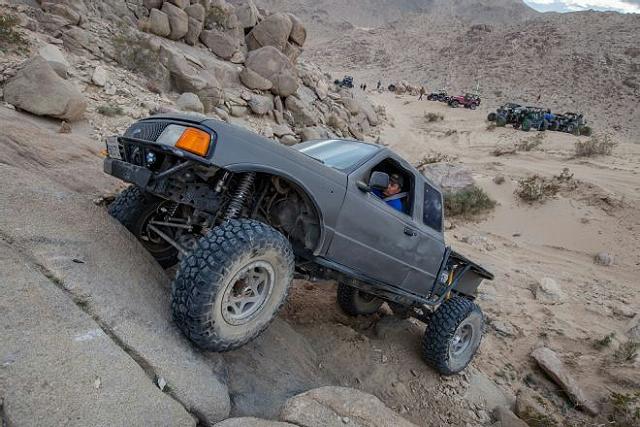
Know Your Angles
Classic 4WD truck advertising would have you believe that high ground clearance is the most important spec. In reality, clearance is more than just the space underneath the front and rear differentials. You need clearance under the front bumper to attack a tall obstacle or large rock, and you need clearance under the rear bumper so that the rear won’t drag once you climb over that rock. These are the approach and departure angles of the vehicle—the angles measured from the ground at the tire’s edge to the lowest point on the vehicle. The higher the angle, the more clearance you’ll have. Similarly, the break-over angle measures how tall an obstacle the vehicle can pass over without getting high-centered.
Let’s be honest, you probably won’t be getting out a protractor to figure out these angles of approach and departure. But it’s important to have a solid mental picture of just how much room there is under your bumpers and underneath the center of the truck. Eventually, you’ll be able to eyeball which rocks and ruts you can drive straight over and which you cannot.
